Canterbury of New Zealand was established in 1904 by three English immigrants, John Lane, Pringle Walker, and Alfred Rudkin. Settling in the Canterbury region of New Zealand, they began producing high-quality woolen garments that quickly gained a reputation for their durability and craftsmanship. The founders named their company after the place they loved, and this deep connection to their adopted homeland was symbolized in their logo featuring three kiwi birds. Over the years, Canterbury has grown from a small local operation to a global brand known for its commitment to producing robust and reliable sports and casual wear.
During the First World War, Canterbury’s expertise in creating tough, hard-wearing clothing was called upon by the Australian and New Zealand Army Corps, for whom they made military uniforms. This period cemented Canterbury’s reputation for producing high-quality garments that could withstand extreme conditions. Following the war, Canterbury transitioned into creating rugby attire, becoming the official kit supplier for the New Zealand All Blacks. This move into sports apparel marked a new era for the company, aligning their brand with the rugged, competitive spirit of rugby and further solidifying their place in the annals of sports history.
Today, Canterbury of New Zealand remains a symbol of quality and resilience. From its roots in producing military uniforms to becoming a leading name in sports apparel, Canterbury has maintained its commitment to excellence. Their products, which include jerseys, protective gear, and casual wear, are designed to meet the demands of both athletes and everyday wearers. With headquarters in Auckland, New Zealand, and global operations based in Stockport, UK, Canterbury continues to innovate while staying true to its heritage of creating durable, versatile clothing. The brand’s dedication to quality and respect for the environment underscores every garment they produce, ensuring that each piece can withstand the test of time, just like the company itself.
How to tell if Canterbury is vintage from the logo
Canterbury of New Zealand, a well-known brand in the world of rugby and sports apparel, has seen several logo changes over the decades. Identifying the era of a Canterbury product can be facilitated by examining the logo used. Below is a detailed guide on how to determine if a Canterbury item is vintage based on the logo.
1970s to 2000s Canterbury of New Zealand logo
- The logo from this era features three stylized red kiwis arranged in a circular pattern.
- The text “CANTERBURY OF NEW ZEALAND” is prominently displayed below the emblem.
- The design is simplistic yet bold, reflecting the brand’s strong identity in the rugby world during these decades.
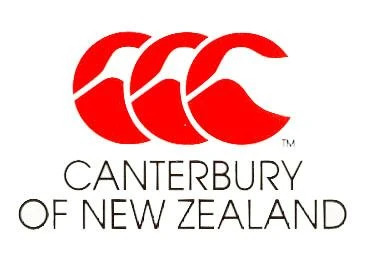
1970s to 2000s Canterbury of New Zealand logo
2000s to now Canterbury of New Zealand logo
- The more recent logo maintains the three red kiwis but modernizes the text to just “canterbury” in a lowercase, bold font.
- The logo is more streamlined and minimalist, in line with contemporary branding trends.
- The emblem and text are usually aligned, offering a clean and modern look.

2000s to now Canterbury of New Zealand logo
How to tell if Canterbury is vintage from the tags
The evolution of Canterbury tags provides valuable insight into the history and authenticity of vintage garments. Over the decades, Canterbury of New Zealand has updated its tag designs, reflecting changes in branding, manufacturing locations, and aesthetic preferences. Here’s how you can identify vintage Canterbury clothing from different eras by examining the tags.
Need help with vintage tags or labels? Submit a picture on our vintage tag identification page, and we’ll assist you!
1970s vintage Canterbury tags
- Early branding featuring “Canterbury” in cursive or serif fonts.
- Tags often include the phrase “International Rugby Jersey” and “Made in New Zealand.”
- Simple designs with minimalistic layouts and basic information.
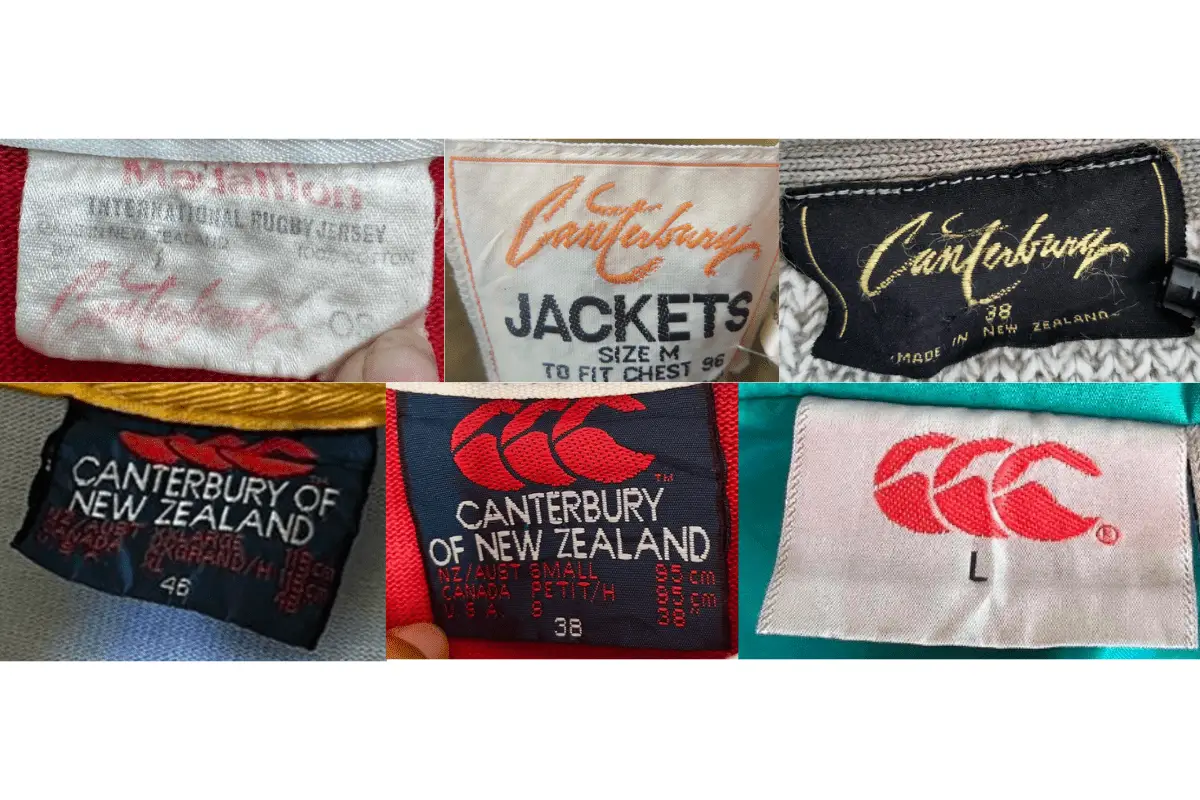
1970s Canterbury tags
1980s vintage Canterbury tags
- Introduction of the iconic three-red Kiwis logo.
- Bold serif fonts are common, with tags still primarily stating “Made in New Zealand.”
- More detailed information including size and care instructions.
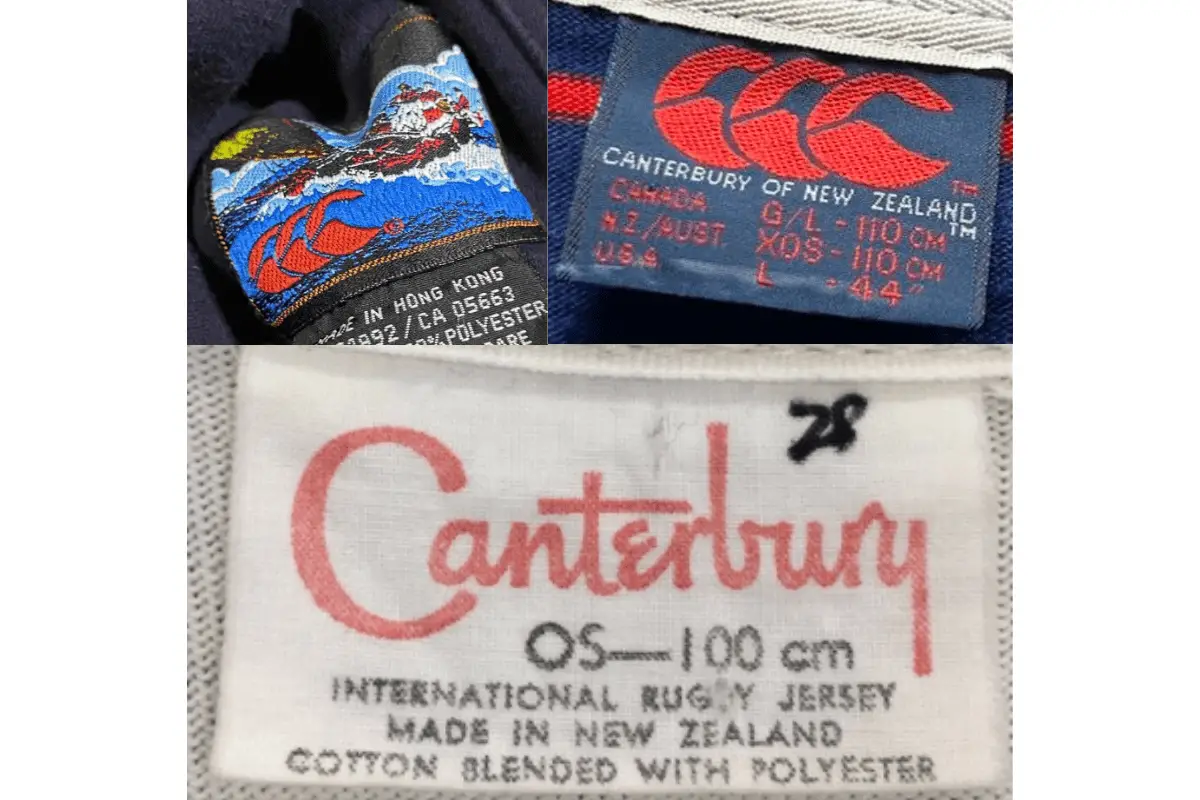
1980s Canterbury tags
1990s vintage Canterbury tags
- Rectangular tags featuring the three-red Kiwis logo prominently.
- Tags often include size information for multiple regions (e.g., NZ/AUST, USA).
- More vibrant colors and slightly modernized designs.
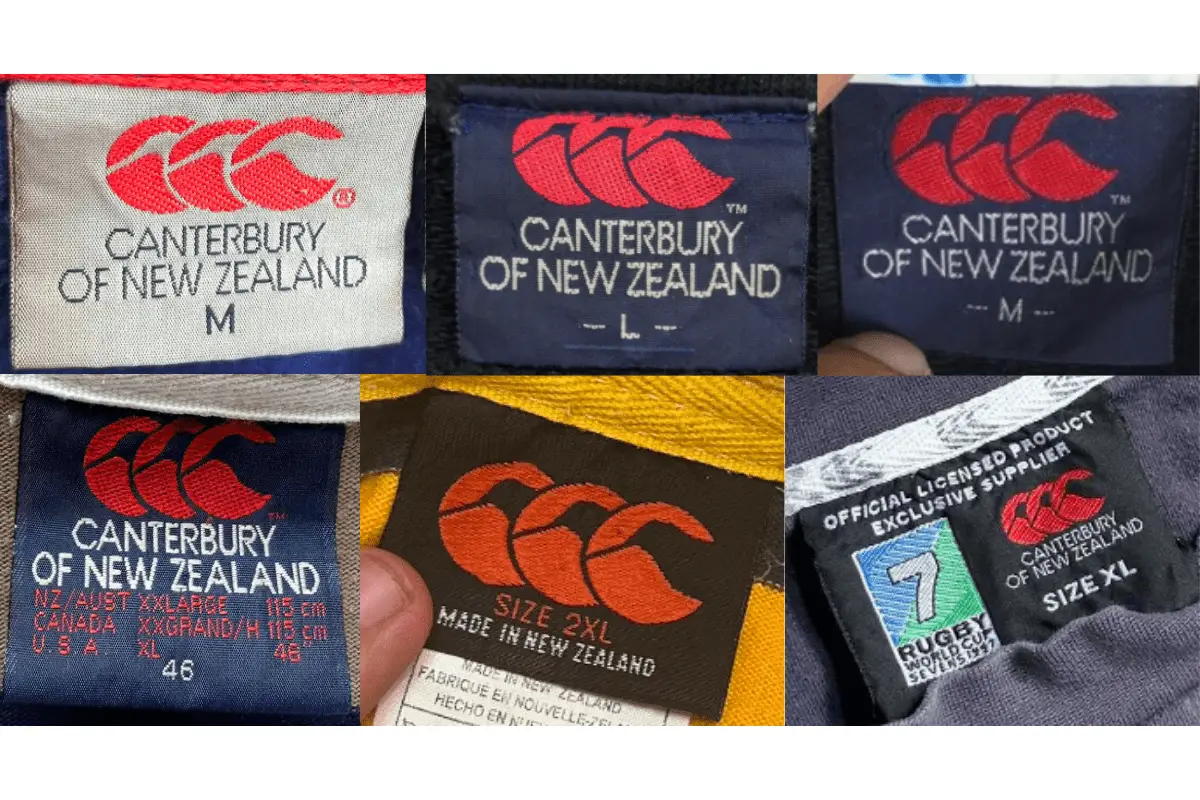
1990s Canterbury tags
2000s vintage Canterbury tags
- Further modernization with darker, more durable materials for tags.
- Continuation of the three-red Kiwis logo, with increased emphasis on international sizing.
- Tags often feature additional branding elements such as “Official Licensed Product.”
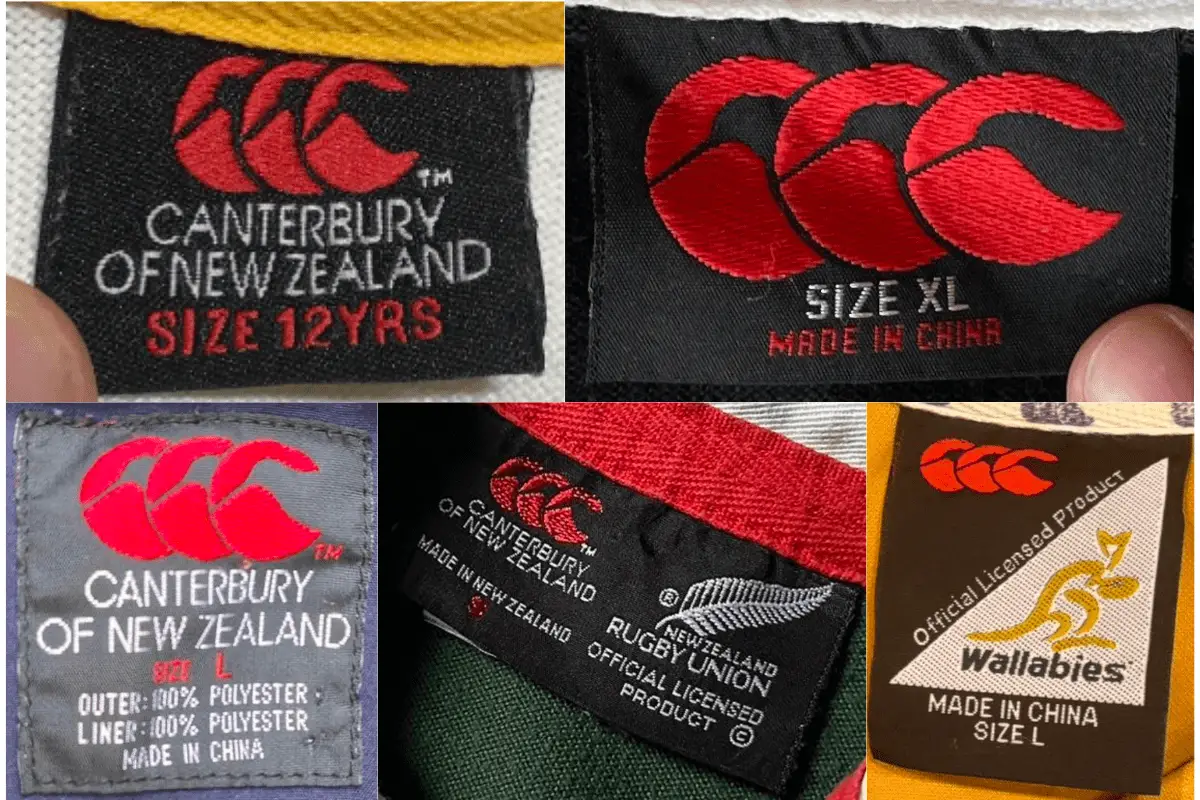
2000s Canterbury tags
2010s vintage Canterbury tags
- Modern layouts and designs while retaining the classic three-red Kiwis logo.
- Use of a variety of colors and materials for tags, reflecting contemporary branding strategies.
- Introduction of new elements such as detailed care instructions and manufacturing locations (e.g., “Made in China”).
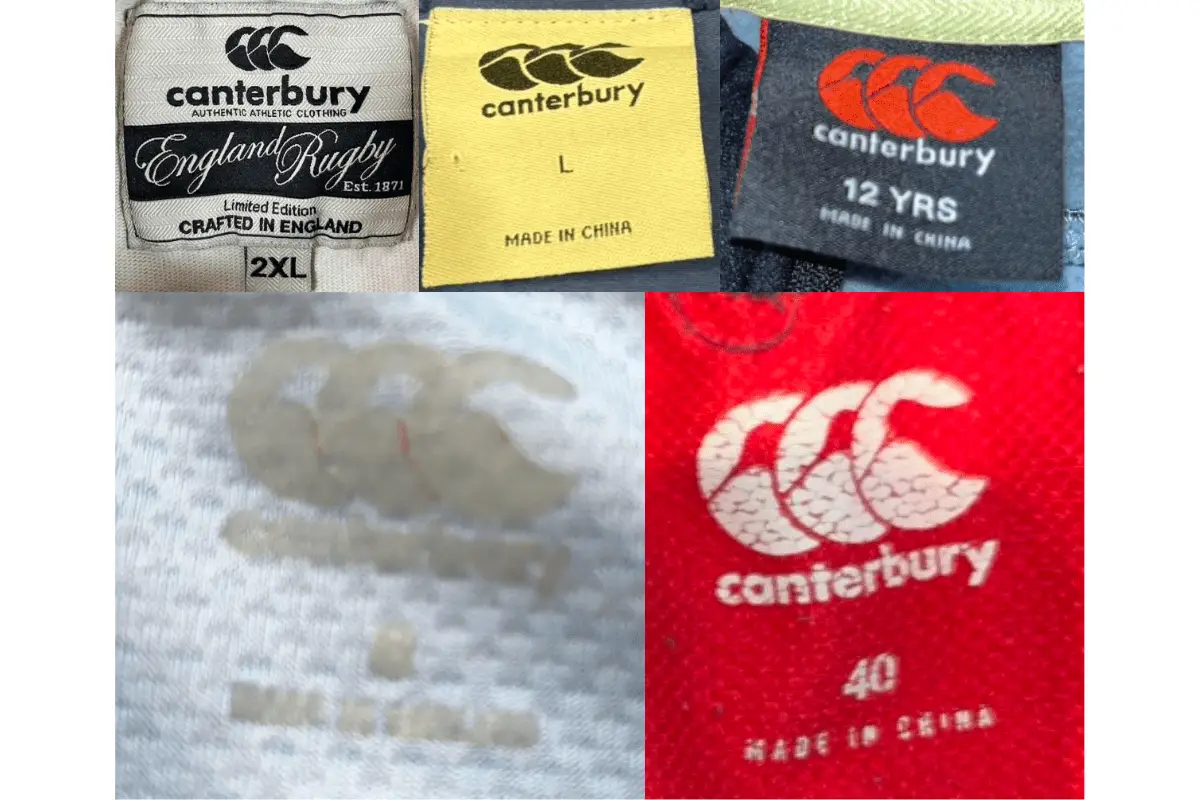
2010s Canterbury tags




